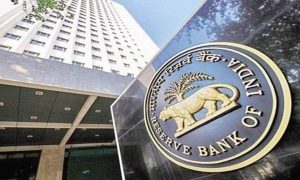If you want a big post-retirement kitty for your child, start preparing early. The National Pension System (NPS) Vatsalya, launched on September 18 by Finance Minister Nirmala Sitharaman, may be something to look at. The scheme is designed specifically for young subscribers. It allows parents or guardians to start saving for their minor children with the option of converting the account into an NPS Tier 1 account once the child reaches adulthood.
Read More: FD Premature Withdrawal: What Happens To Your Interest When You Break A 5-Year FD After 1 Year?
“Under this scheme, parents can open and manage investment accounts on behalf of their minors, ensuring a structured approach to savings and
Investments. This not only instils a sense of financial discipline from a young age but also sets the stage for robust financial planning as children grow into adulthood,” says Rahul Bhagat, CEO at DSP Pension Fund Managers.
One of the key features of NPS Vatsalya is its versatility. It even allows grandparents, relatives, and other family members to contribute to the account, but on special occasions, such as birthdays, instead of giving traditional gifts.
“NPS Vatsalya is essentially an extension of the NPS scheme that broadens its benefits for children, aiming to maximise returns with additional years of investment,” says Raj Khosla, Founder and Managing Director of financial services firm MyMoneyMantra.com, a financial services marketplace.
Read More: Bandhan MF launches two funds with focus on Nifty 500 Value 50 Index, Nifty 500 Momentum 50 Index
The scheme fosters the habit of saving from a young age, encouraging children to build a solid financial base. “Parents can aim to help their children achieve a significant milestone of `1 crore by the time they turn 18. A monthly investment of `7,000, increased by 10% each year, can grow into a corpus of Rs 1.01 crore at an annual rate of 12% over 18 years. This demonstrates the scheme’s potential to create long-term wealth,” adds Khosla.
NPS Vatsalya offers several flexible features. It can be started with a minimum contribution of Rs 1,000, and it allows partial withdrawals after three years. The idea is to build a significant retirement corpus for children over time; however, many parents may prioritise their child’s education at the age of 18, rather than their retirement planning.
Suresh Sadagopan, Founder of Ladder7 Financial Advisories, a Sebi-registered investment advisor, says that parents should consider various financial goals during their earning years, such as buying a home, funding their children’s education, vacations, and more. “Retirement savings are also critical. If parents can contribute regularly to NPS Vatsalya without compromising these other financial goals, they should consider it,” he says.
Under this scheme, once the child turns 60 and the corpus exceeds `2.5 lakh by that time, 80% of the fund must be used to purchase an annuity, while the remaining 20% can be withdrawn as a lump sum. If the corpus is `2.5 lakh or less, the full amount can be withdrawn as a lump sum. However, parents will not be able to withdraw a large sum when the child turns 18, as the scheme is primarily designed to plan for the child’s retirement.
Limitations
But, the scheme permits partial withdrawals, restricted to 25% of contributions after a three-year lock-in period, for education, specific illnesses, and disabilities. Moreover, one can withdraw a maximum of three times.
“Limiting premature withdrawals to 25% of the corpus and restricting partial withdrawals from contributions makes NPS Vatsalya less attractive for parents looking to save for their children’s higher education,” Khosla adds. This could be a deal-breaker for those who want more flexibility, he says.
The scheme’s restricted equity exposure is another limitation. With the ‘Active’ and ‘Auto’ choice options, you can allocate a maximum of 75% to equities, while the default option caps equity exposure at 50%. This limits the scheme’s growth potential compared to mutual funds, which allow for 100% equity exposure, offering higher returns over the long term.
Moreover, there is no specific guidance yet on the tax benefits of NPS Vatsalya. Experts believe it may offer the same tax deductions as standard NPS contributions under Sections 80C and 80CCD (1B) of the Income Tax Act; however, official clarification is still pending.
While parents may be anxious to start the retirement planning of their child early, more clarity is needed on NPS Vatsalya.





































